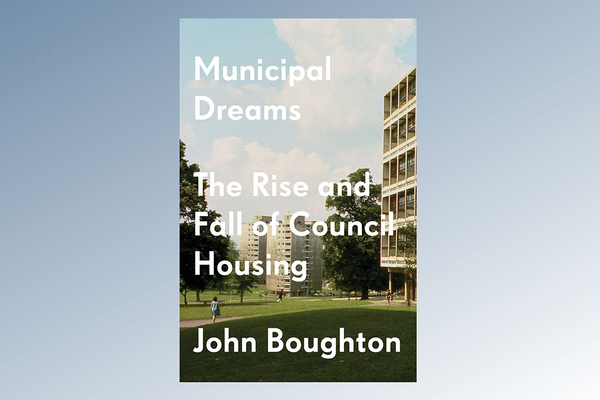You are viewing 1 of your 1 free articles
 Jules Birch
Jules BirchA chance to celebrate council housing’s past, present and future
The centenary of the Addison Act in July is an opportunity to celebrate a proud history, writes Jules Birch
This year marks the centenary of a key event in the history of housing in Britain that deserves to be widely celebrated.
The Housing Act 1919 was designed to deliver on Lloyd George’s promise of homes for the soldiers, sailors and munitions workers of the First World War.
He never actually said the exact words “homes fit for heroes” and only 213,000 of the 500,000 promised were delivered before the Treasury axe fell in 1921.
But the results can still be seen in towns and cities all over the country in well-designed and spacious houses, and the act drawn up by health minister Christopher Addison also created a legacy for the future that went beyond the homes themselves.
It effectively established principles for council housing that lasted (but would also be contested) through the rest of the century by giving local authorities responsibility for assessing local housing need and the tools and the resources to address it.
Councils had been building houses on a discretionary basis since the 1860s but both main political parties, the Conservatives and the Liberals, were opposed to state subsidies. Under the 1919 act, councils levied a penny on the rates and the Treasury met the rest of the initial costs in loans repayable from the rents.
“The act effectively established principles for council housing that lasted (but would also be contested) through the rest of the century”
The homes themselves would be of a far higher quality than those being built in the private sector, with the best homes drawing on garden city principles to deliver space, light and a bathroom instead of damp, overcrowding and slums.
Council housing has had its ups and downs in the 100 years since. The Conservative part of the coalition government in 1919 saw council housing and post-war rent control as temporary measures that could be abandoned when the housing market returned to ‘normal’ (a theme that would be replayed after 1979).
The Geddes Axe of 1921 scrapped a programme which costs were inflated by post-war inflation. Mr Addison resigned in protest from the government and eventually left the Liberal Party.
When Aneurin Bevan proclaimed his vision of a ‘living tapestry’ in 1945, Mr Addison was a member of the Labour government and council housing would become a mass tenure in the years as both main parties vied to build more of it.
For most of the past 40 years, through the Right to Buy, spending and borrowing controls and stock transfers has mostly been about the downs but politics is at last moving back in the right direction.
I’ve just edited a special issue of Welsh Housing Quarterly celebrating the centenary, with articles looking back to 1919 (see, for example, this article by John Boughton, author of Municipal Dreams: The Rise and Fall of Council Housing).
But I also look at more recent developments that allow local authorities to look to the future with renewed confidence.
It may be too early to assess the full impact of the end of borrowing caps in England and Wales, but the Right to Buy finally ended in Wales last Saturday after several years of being suspended in many areas.
There was clear ambition to build new homes among the Welsh councils that I spoke to but this is about much more than just numbers – councils are also looking to advance agendas on quality, space, energy efficiency and embracing a wider housing role.
Austerity and Universal Credit may continue and I also found some frustration at the time it takes to get things done, but 100 years on from 1919 there is a real determination to make sure that they do.
But this year’s centenary is about more than just the plans of individual local authorities. It also marks an opportunity to celebrate a proud history, bring communities together and remind everyone of the achievements of the past that could be an inspiration for the future.
The best plans I’ve come across so far are in Bristol where Homes for Heroes 100, a group of projects in Sea Mills, Hillfields, St Judes and Knowle West, has won National Lottery funding to explore the history of the areas and the people who have lived there over the past century.
“This year’s centenary is about more than just the plans of individual local authorities. It also marks an opportunity to celebrate a proud history”
There will be a book written by people who have grown up on council estates, art projects, walking tours, a phone box refurbished to share stories, and the planting of a new oak tree to go with the one planted by Mr Addison himself when he visited Bristol in June 1919 to cut the first sod for new homes at Sea Mills.
The present day housing minister was asked in the Commons on Monday why he had turned down an invitation to the centenary celebrations and said that he was “impatient to visit” and plans to be in Bristol today (Thursday).
There is also a conference at the Institute for Historical Research in London in July bringing together historical perspectives on 1919 plus broader themes about social and housing policy.
The Association of Retained Council Housing has raised the anniversary with the government and is calling for ideas and suggestions about how to mark it.
There are Addison Act houses all over the country and many number of different Addison streets of which stories their residents may not know.
This year’s centenary is a chance to celebrate not just the past but also the present and the future of council housing.
Jules Birch, award-winning blogger










